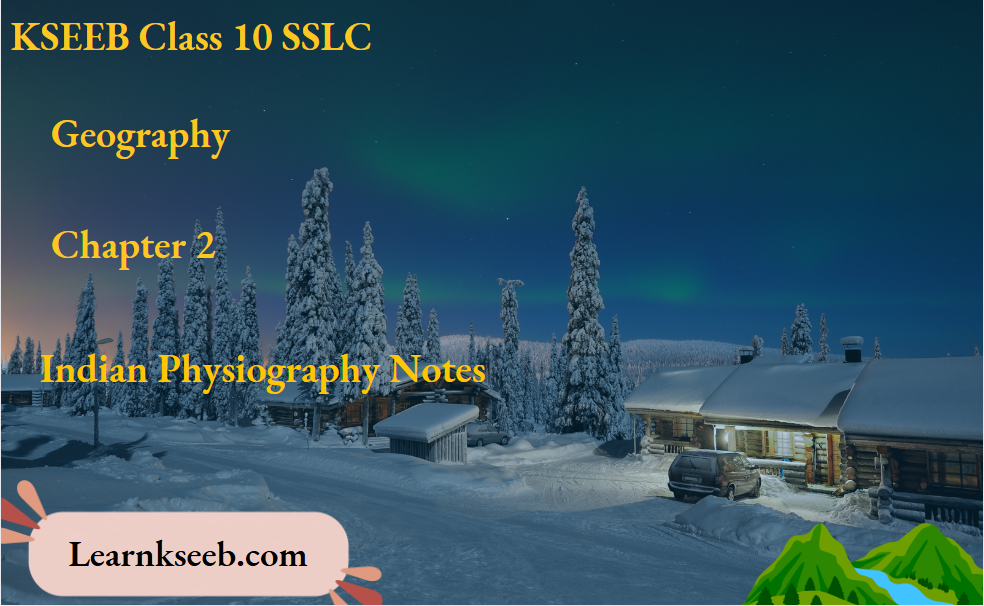KSEEB Class 10 SSLC Geography Chapter 2 Indian Physiography Notes Northern Mountains and Northern Great Plains
Based on physiography, India can be divided into four major divisions-
- The Northern Mountains
- The Northern Great Plains
- The Peninsular Plateau
- The Coastal Plains and Islands.
- The Northern Mountains comprise of the Himalayas, which are a group of young fold mountains. They extend as a continuous chain along the northern boundary of India
Generally they have steep slopes towards India (South) and gentle slopes towards Tibet (North).
- The Northern Mountains based on height are classified as-
- The Greater Himalayas (Himadri),
- The LesserHimalayas (Himachal),
- The Siwalik Hills The Greater Himalayas or Himadri are the earlier formed ranges of the Himalayas. The range consists of the highestpeaks of the Himalayas.
- The Lesser Himalayas or Himachal contain many valleys such as Kashmir valley, Kangra valley, Kullu valley and are also noted for hill stations such as Shimla, Ranikhet, Mussoorie, Nainital and Darjeeling.
- The Siwalik Range is the most recent formation and characterized by having lesser height.
- The Northern Great Plain lies between the Himalayas and the Peninsular Plateau of India. It is formed by the

KSEEB Class 10 SSLC Geography Chapter 2 Indian Physiography Notes The Peninsular Plateau And The Coastal Plains and Islands
- Peninsular Plateau is the largest physical division of India.
- It is the oldest landmass as it was being a part of the Gondwanaland.
- It lies to the south of the Great Plains and occupies about 16 lakh km².
- It is bounded by many hills and plateaus namely the Aravalli, Vindhyas, Satpuras, Western Ghats, Eastern Ghats,
- Chotanagpur ranges, Deccan Plateau, Malawa Plateau etc.
- The Aravalli range, the oldest fold mountain, lies to the north-west.
- The Vindhyan range flanks the Northern edge of the Narmada Valley.
- The Satpura range runs in an east-west direction south of the Vindhyas, in between the Narmada and the Tapi rivers.
- The Western Ghats are a continuous range running parallel to the west coast of India from the Tapi valley to Kanyakumari.
- The Eastern Ghats run almost parallel to the east coast of India.
- The Deccan Plateau is bounded by Satpura and the Vindhyas in the north-west. The Western Ghats in the west and Eastern Ghats in the east, the Mahadev and the Maikal ranges in the north.
- Coastal Plains extends from the Rann of Kutch in the west to the delta of the Ganga in the east.
- The Western Coastal Plain extends from the Rann of Kutch to Kanyakumari.
- The Eastern Coastal Plain extends from the north of river Subarnarekha to Kanyakumari.
- There are about 247 islands in India. Of these, 204 are in the Bay of Bengal and 43 are in the Arabian Sea.
- The Andaman and Nicobar islands are in the Bay of Bengal. The Lakshadweep islands are in the Arabian Sea and are formed by corals.
